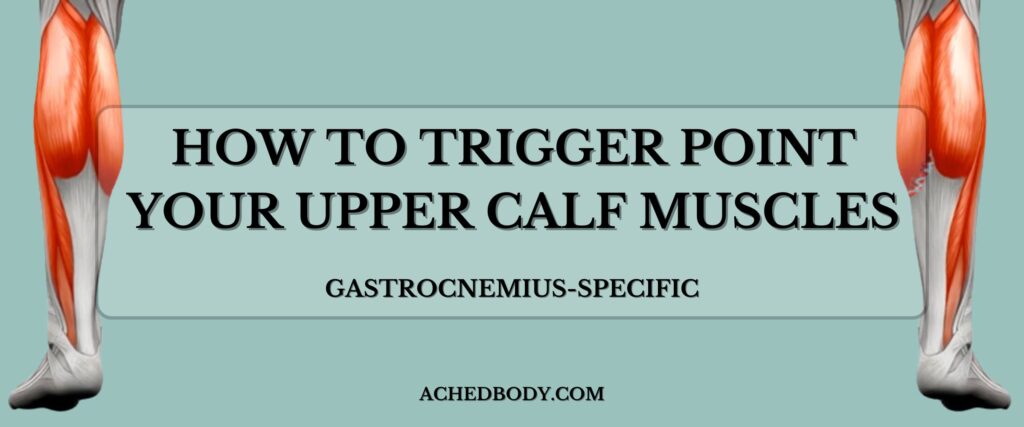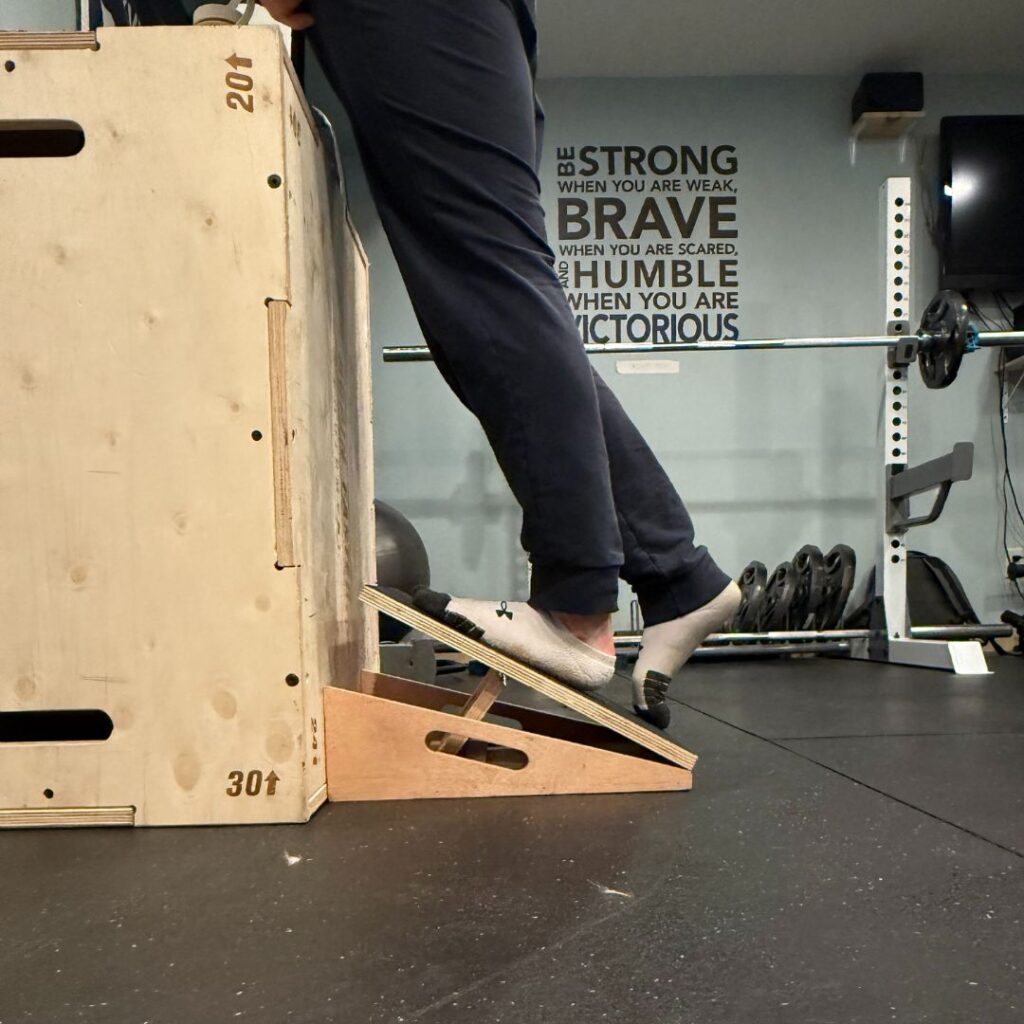
How To Trigger Point Your Upper Calf – The Gastrocnemius Muscle
Most people let their calf tightness go untreated for years… even decades.
When trigger points develop in the gastrocnemius, they can cause pain or overcompensation from other areas of the body.
So this article goes in-depth on:
- Locating gastrocnemius trigger points.
- Effective techniques to release trigger points.
- Preventing more trigger points in the future.
If you’re interested in learning more about trigger pointing, check out my Ultimate Guide to Trigger Point Therapy for the head to toe breakdown.
Finding Gastrocnemius Trigger Points
The gastrocnemius is a large, two-headed muscle that crosses both the knee and ankle joints, and trigger points can happen all throughout the muscle tissue.
The shape of your “Gastroc” is largely dependent on genetics and whether or not you train them.
But, trigger points will appear no matter what, so here are some common spots to try first.
Common Gastrocnemius Trigger Point Locations
Medial Gastrocnemius Trigger Points (Inner Calf)
This section is easy to pin because the muscle is easy to move to the side as shown in the picture below.
Learn more about techniques below!
Lateral Gastrocnemius Trigger Points (Outer Calf)
I have found that this section of the Gastroc is harder to manipulate and grip, but can still be targeted well with massage balls.
It is found on the outer upper portion of the calf, just below the back of the knee.
How to Locate Gastrocnemius Trigger Points
Now it’s time to explore.
Here are some steps to find your trigger points:
- It is best to sit down on the floor with a massage ball under your calf with your foot resting.
- Use side to side motions and different angles to move the ball across your leg.
- Take notice of the spots that give a slight burning sensation or seem to pop out or move from under the pressure.
The spots that seem to pop are where layers of muscle stack on top of each other. The goal is to have smooth transitions from one muscle to the next, so a large drop-off can be a signal that muscle layers are stuck together.
The areas that give you the burning or large amounts of tension are trigger points.
Now, the next step is learning how to release them.
Best Techniques for Releasing Gastrocnemius Trigger Points
The gastrocnemius is a pretty thick muscle so there may be a lot to work through.
Here is a systematic approach I use to get rid of calf pain and keep the tissue super fresh:
Ball Trigger Pointing for Upper Calf
There are two levels to using a ball to get rid of trigger points.
The first level is manipulating the pressure you can apply in different ways.
The second is creating active releases through movement and trigger pointing at the same time.
Stick with me because this is game changing.
This video shows a breakdown of each. (coming soon)
- Find a trigger point in the gastrocnemius by palpating the upper calf.
- Press on the knot using the ball with a leg crossed over or your hands applying pressure.
Do this for 30-60 seconds in one spot to inhibit the muscle.
- Then stretch the muscle using the Ultimate Stretching Guide (my favorite is a slant board stretch)
- Repeat as many times as you need to relieve the tension.
But as I said above, you can go one step further.
- Pin the muscle on the trigger point or point of tension.
- Move your calf into a stretched position by flexing your foot towards you.
This extra movement will force your restricted muscle into a stretched position while pinning it. That breaks up adhesions and allows the fascia around the area to relax.
Foam Rolling Variations for the Gastrocnemius
The last way you can apply pressure to the calf is with foam rolling using a traditional foam roller or a PVC pipe.
Since the gastrocnemius is a large muscle, modifying your foam rolling technique can make the release more effective.
How to Foam Roll for Gastrocnemius Release:
- Sit on the floor with your legs extended and place a foam roller under your upper calf.
- Lift your hips off the ground so your weight is pressing into the roller.
- Slowly roll the upper calf up and down as well as from side to side, pausing on any tender spots.
- Hold pressure on tight areas for 30-45 seconds.
- For deeper pressure, cross one leg over the other and repeat the movement.
If you want more targeted trigger point therapy use the Ball techniques above.
Advanced Technique: Gastrocnemius Rotation
Similar to the other methods, while holding pressure on a trigger point, rotate your foot inward and outward to target different muscle fibers.
This technique helps release adhesions in both the medial and lateral heads of the gastrocnemius.
For a full guide on foam rolling techniques, check out our Foam Rolling for Calves Guide.
Stretching After Release
After releasing trigger points, you have to follow up with stretching to integrate the relaxed muscle into a lengthened position. Stretching helps improve the new range of motion gained from trigger point therapy.
Best Stretches for the Gastrocnemius
- Wall Calf Stretch: Stand facing a wall, place your hands against it, and step one leg back. Keep the back leg straight with the heel on the ground to stretch the gastrocnemius.
- Elevated Calf Stretch: Place the ball of your foot on an elevated surface (such as a step or slant board) and let your heel drop down to stretch the upper calf.
- Bent Knee vs. Straight Leg Stretch: A straight leg targets the gastrocnemius, while a bent knee stretches the soleus.

For a step-by-step guide to stretching after trigger point therapy, visit our Ultimate Stretch Guide.
Combining These Methods for Maximum Relief
To effectively release gastrocnemius trigger points and prevent them from returning, combine all three techniques. For all of my how-to videos, go to my youtube channel to watch them all.
If your tightness extends to the lower calf or Achilles region, check out my Soleus Trigger Point Guide.
And if you’re new to myofascial release, explore the Ultimate Trigger Point Therapy Guide.
Let me know if you need any help! Good luck.
-Nick